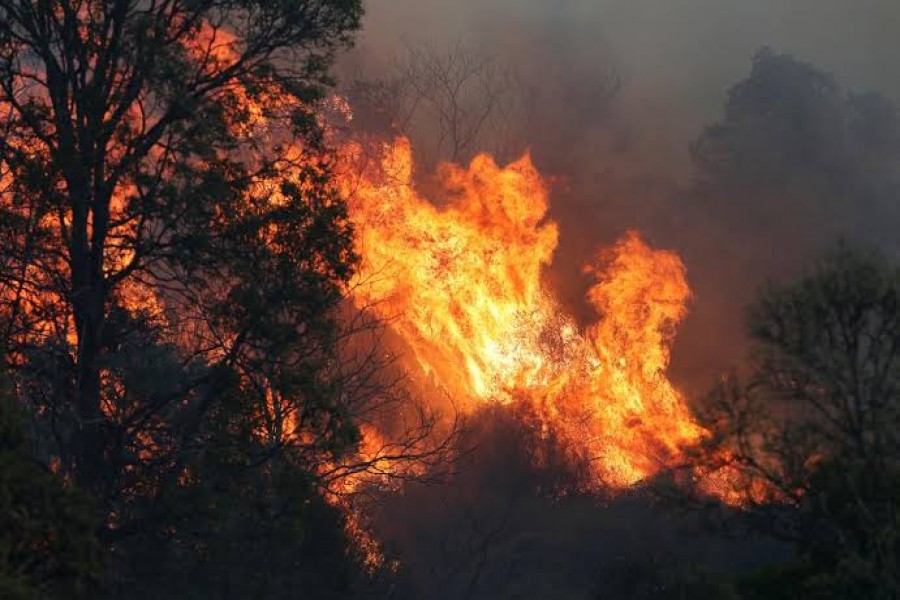A state of emergency has been declared in New South Wales, Australia, amid fears a record-breaking heatwave will exacerbate the state's bushfire crisis.
The nation experienced its hottest day on record on Tuesday - an average maximum of 40.9C (105.6F).
But this record could be eclipsed, with forecasters predicting more intense heat on Thursday and later in the week.
Authorities in New South Wales (NSW) are currently fighting about 100 fires, in a crisis that has lasted months.
On Thursday, Premier Gladys Berejiklian announced a seven-day state of emergency due to forecasts of worsening conditions.
"The biggest concern over the next few days is the unpredictability, with extreme wind conditions [and] extremely hot temperatures," she told reporters.
Parts of NSW, of which Sydney is the capital, are forecast to hit temperatures in the mid-40s on Thursday.
A state of emergency gives fire authorities additional powers to cope with the crisis. It is the second such declaration in NSW since last month, reports the BBC.
Australia's bushfire crisis and a severe, long-running drought have spurred criticism of the nation's climate policies.
Heatwaves are Australia's deadliest natural disaster and have killed thousands more people than bushfires or floods.
The previous temperature record - an average maximum of 40.3C - was set in 2013.
What's behind the heatwave?
Australia heated up this week as a mass of hot air swept east across the continent.
The dominant climate driver behind the heat has been a positive Indian Ocean Dipole (IOD) - an event where sea surface temperatures are warmer in the western half of the ocean, cooler in the east. The difference between the two temperatures is currently the strongest in 60 years.
The warmer waters cause higher-than-average rains in the western Indian Ocean region, leading to flooding, and drier conditions across South East Asia and Australia.
According to the Bureau of Meteorology (Bom), Australia has warmed overall by slightly more than 1C since 1910, with most of the heating occurring since 1950.
Officials predict that 2019, on the temperatures recorded so far, will be among the four warmest years on record.
Bom has urged people to keep cool, drink lots of water and follow the advice of emergency services amid the latest heatwave.
Temperatures are expected to exceed 45C in NSW, Victoria and South Australia this week.
What impact will the heat have on the fires?
Bushfires have been raging in Australia for months, killing six people, destroying hundreds of homes and burning millions of acres of land.
Officials have warned that the combination of high temperatures and strong winds could heighten the crisis.
Two major fires are currently burning near the outskirts of Sydney, including a "mega blaze" which has burnt over 400,000 hectares.
Premier Berejiklian said crews were watching the areas of greatest concern, but warned "embers and spot fires can occur very unpredictably" in turbulent winds.
Smoke from the fires blanketed Sydney again on Thursday, sending air quality beyond "hazardous" levels in parts of the city. Air pollution from the fires has become a lingering health problem for many of the city's residents.
A state-wide "total fire ban" has been put in place across NSW until midnight on Saturday. More than 2 million hectares of land has been burnt across the state since September.
Emergency services in the state of Queensland evacuated residents from dozens of homes on Wednesday as they battled to contain an out-of-control fire.
"You need to be ready to follow your bushfire survival plan. If you do not have a plan, or intend to leave, you should be ready to leave the area because the situation could get worse quickly," they warned.


